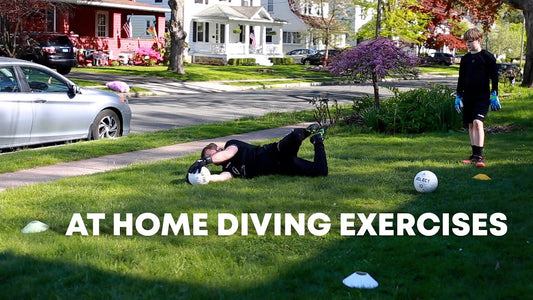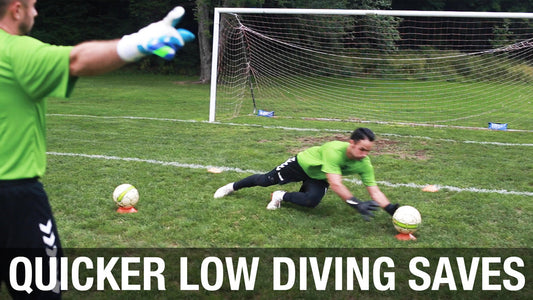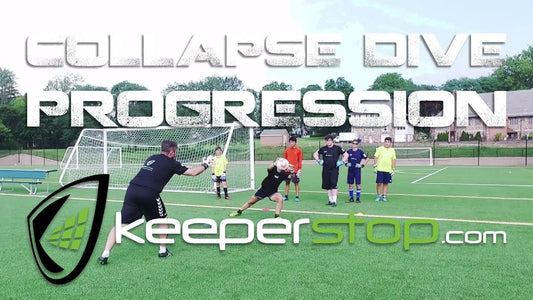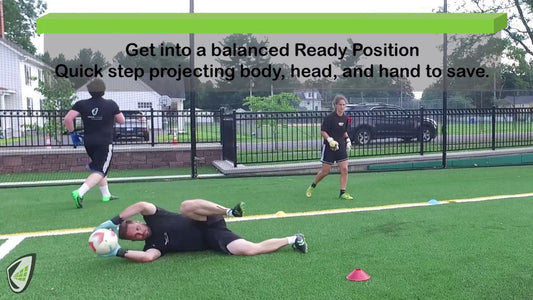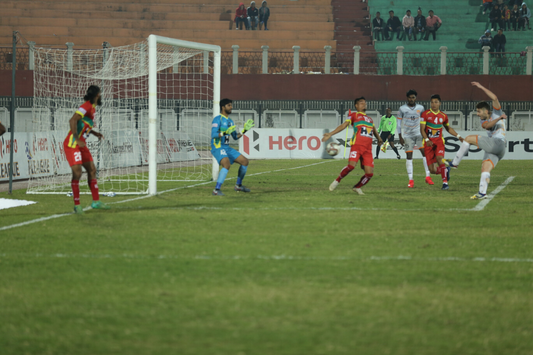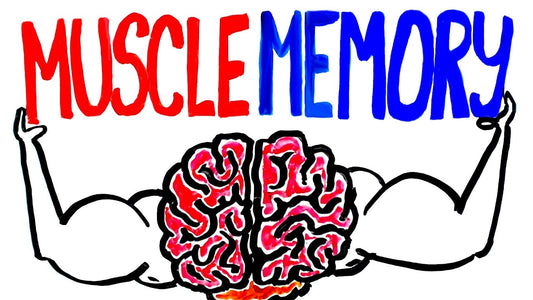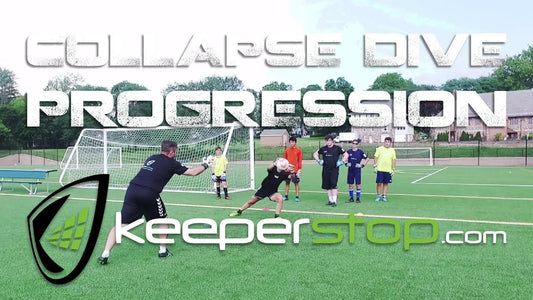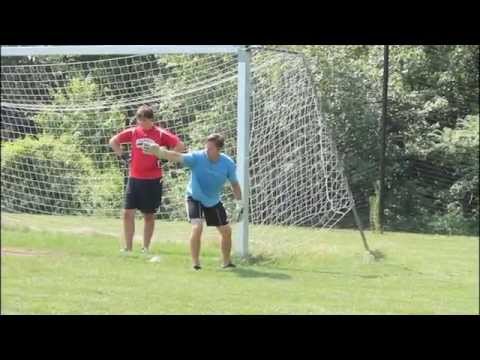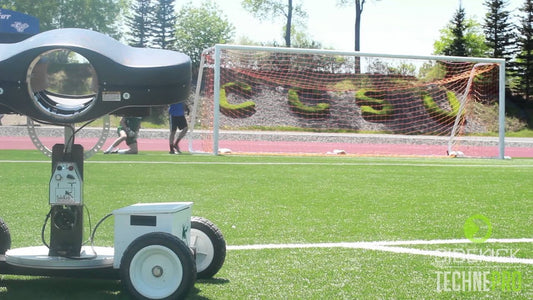Making a diving save is one of the great joys of goalkeeping. Extending your body and flying through the air to make a finger tip save is wonderful. It is importnat that we train our body and mind to use the correct soccer goalie diving techjnique. It protects our body from injury and helps us make more saves in the goal. Here we have plenty of articles and videos on the best diving, extension and reaction saves!
Diving, Extensions & Reaction Saves
At Home Youth Diving for Goalkeepers
This is the second at home training session recorded with a youth goalkeeper. Last time we focused on basic warm up and handling drills. In this session the focus is on introducing diving to the youth keeper, making sure they control their body and the ball. You can follow along with these soccer goalie exercises with minimal equipment and a training partner. Parents, this is a great way to keep your goalkeeper engaged during the lock down.
After a good warm up, we move onto diving technique, breaking the art down into easily understood sections. With youth goalkeepers, it is important that they learn the diving technique is small steps, so that they control their body and the ball. We do not want a young soccer player slamming their body into the ground over and over as it will lead to injury. By breaking the technique down, it gives the goalkeeper time to absorb the information and produce a quality save. This will take time and lots of repetition as you can see in the video.We like to start with the goalkeeper on their knees with a stationary ball, learning how to step in the direction of the shot and slowly lower their body to the ball in a controlled manner. This reduces the chances of injury and ensures the goalie learns the correct technique. Once comfortable you can progress to a soccer ball service with either the feet or hands. Now the keeper is developing timing of the shot and learning when to lower their body. We encourage the keeper to think about moving their body east to west rather than falling in a north to south manner. Progress to serves off the ground (hip) height to develop further timing and a controlled landing. The second phase of the session moves the goalkeeper to their feet and continuing with the same technique. We work on the keeper taking a large step in the direction of the stationary ball and bending their knee to lower the body toward the ball. Again, once comfortbale the ball can then be served to the working goalkeeper either with the feet or hands. The final progression would be to increase the speed and height of the service to further challenge the goalkeeper.
Finally you can play "goalkeeper wars" with the working goalie to keep them focused and increase competition. Most goalies love to play this game and it is fun at any age.
This session was conducted by Christian Benjamin of www.keeperstop.com. Contact the goalkeeper experts at Keeperstop on 860.904.7679
Goalkeeper Diving Drills For Close Shots
Goalkeeper Low Diving Progression with Wider Ready Position and Inside Step
Shots on goalkeepers are coming in closer and harder with less time to react. This goalkeeper training progression helps a developing youth goalkeeper to dive and react quicker with a wider ready position, proper balance, and inside step to load and explode quicker.
Diving Warm Up: Stationary balls positioned close enough to reach and save through the ball with one step. 3 – 4 reps each side. Goal is to warm up the goalkeeper.
Ready - Help them develop the timing of ready position, proper distance of feet in the starting position for maximum quickness and power. Hands - Focus on establishing hand a coordination with hands slightly out front wider than body width.Go - When the goalkeeper has to make the save the goalkeeper will step inside their set position. Drive head and hands through the shot and save.
Off Angle to Wider Ready Position, Second Progression: The goalkeeper can visualize they are ready for a ball in the wide channel outside the 18 yard box. The ball is crossed or driven to a target 10 yards off the goal line.
Ball line and Angle - The goalkeeper will change the angle by dropping back on or close to the goal line.
Ready and Balanced - Wider ready position to utilize hands and feet. Hand position off the body wider than shoulder width. Not straight but bent to drive and push arm and hands to the save.
Inside Step - Short inside step to prepare body weight and muscles in the direction to push and drive with maximum power in the shortest amount of time.
The inside step established a better angle to react and push from. Bigger steps outside shoulder width can be problematic for quicker reaction saves since they are bigger movements and take more time. Footwork or outside steps are great for shots from distance. The inside step for low diving is another technique to master to load and react quicker with the most power possible for closer shots such as cutbacks or headers. Watch the pros dive during closer range shots. Many employ the inside step.
Watch the video below and play with it to see what you think. There is no right or wrong way to make a save…. As long as you make it. Contact keeperstop.com with any goalkeeper equipment or education questions.
Thank you to Elite Sport USA for supplying the Elite goalkeeper gloves and equipment for the training session. Great game performance at on sale prices we can all afford.
Soccer Goalkeeper Training. Drills on How to Dive
Goalkeeper Training: Collapse Diving Progression
Introduction: Goalkeeper drills for developing youth goalies from 11 to 16 years old. There are a million diving excercises. They are fun and exciting to watch. I wanted to introduce the when, why, and how of the collapse diving or better yet the decision to dive.
Question: Why dive? Answer: To make the save duh? More specifically because the speed and location of the shot moves the ball away from the goalkeeper’s center or core. Depending on the shot the collapse dive is an attempt to get as much of the keeper’s body behind the ball. It is more of a controlled dive as opposed to a full extension save.
The Keeperstop.com YOUTUBE goalkeeper training collapse dive progression from warm up to a few simple but effective progressions to reinforce the diving technique; a proper ready position; footwork; angles. Feel free to like it and share it with your goalkeeper friends.
Part 1 Cognitive Warm Up - Different color cones in the shape of a square or rectangle. Base the size of square on the desired footwork and the ability level of the goalkeeper. Goalkeepers can travel to line or touch a cone. Move from hand services to quick volleys as the keeper warms up, feels comfortable, wants to be challenged more etc. Vary the type of service to reinforce and challenge the goalkeeper’s ability to make the correct decision and control their body.Goalkeeper Coaching Points (CP):
Short sharp movements from the keeper close to their set position with arms bent and hands out in front at the ready.
Strong catch in front of the body.
Collapse dive when GK needs to get more behind the ball, control the ball, as well as the body.
Step is the elevator that gets the head and hands behind the ball. For higher shots the body and head are higher behind the ball. For a lower shot the goalkeeper transitions body weight and hands over the inside knee lowering the head and hands behind the ball.
I have the goalkeeper use the ground to absorb and control the impact of the dive.
Don’t cheat, get caught moving, or guessing.
Relax
Part 2 6:42 - Keepers in goal with 2 two different services. Here we opted to reinforce the collapse dive technique within angles such as 3 goal situation. Bigger space to move across and cover. Goal is split in half for to challenge the goalkeeper but reinforce the collapse dive technique and decisions through some success. Requires faster movement, recovery, better angles, control of the body and ball, and decisions to catch vs deflect. CPs:
Proper angles and starting position related to shooter.
Step and body position behind the ball is based on the shot. Goal is to finish with head and hands forward of starting position.
Get square and balanced to new angle and potential shooter as quickly as possible.
Part 3 8:49 – Evolve to a more game realistic shot from a side angle. Server can choose to shoot or pass to the center. Servers make sure this does not turn into a breakaway sessions. Goalkeeper has to consider many things such as angles, footwork, catch vs deflect as well as the techniques in diving.CPs:
Angle and vertical position have to consider a shot as well as a pass.
Balanced and ready
Quick movements and decisions
Manage rebounds out the side of the six yard box.
Always love what you do.
Details Matter
Give it your best every opportunity
To reinforce technique or decision making build from simple to complex. Controlled services and scenarios to game realistic.
Soccer Goalie Low Diving Drills and Training
Low diving saves or shots require more control, confidence, and timing for goalkeepers of all ages. Some youth and developing goalies love to throw the body about. Others need a little time and progressions to gain the confidence. The two goalkeeper diving drills are for developing to intermediate keepers. To build confidence and target certain goalkeeper techniques we started with services to one side.
When working on services from one side concentrate on a few coaching points. Drive those home. Remember pros get beat by low balls. Give your goalkeeper time and repetitions before stopping the session to tell them everything you know about the diving technique.
A balanced ready position.
Step as an elevator to bring the goalkeeper closer to the ball.
Projection of head and hands forward.
Watch the youtube video and make the save with them. Focus on a few of the points, their successes, and development opportunities but dont over analyze.
The second progression in the goalkeeper low diving techniques reinforces the timing and control needed to make the save. This is still very much a controlled environment to build confidence but a far cry from a stationary ball used to introduce a goalie to diving. Keepers tend to dive back due to a few factors such as distribution of weight once a step has been taken and timing of the step. Building from more simple to complex helps train the brain to react quicker.
Introduce a few techniques at a time:
Get shoulders and head down and behind.
Dont just fall!
Step creates room for the hands to shoot to the ball.
Do you have time for footwork based speed of the shot?
and many more….
We used middle school to high school aged goalkeepers with varying experience levels. Modify the drills based on the ability level of the goalkeepers. Remember build confidence. There a lot of coaching points to help you control the ball. Simple to complex. There is no such thing as advanced goalkeeper training. Simple goalkeeper drills can me modified to challenge the most experienced GK. Progress to faster services, closer shots, a bouncing ball, to name a few.
Use your imagination. Practice makes permanent!
Coaching the Goalkeeper to Make Point Blank Saves
Great soccer goalkeeper training session by Tony DiCicco, Former Womens National Team Head Coach, NSCAA Goalkeeping Academy is the Founder and Technical Director of SoccerPlus Goalkeeper School. Session topic is Coaching the Goalkeeper to Make Point Blank Saves. Session address ready position and saving shape; angles; time and courage; diving, and second saves. Really fun and challenging goalkeeper drills for soccer goalies to develop courage and make quick decisions under pressure.
Credit:
Tony DiCicco, in addition to being the Director of the NSCAA Goalkeeping Academy is the Founder and Technical Director of SoccerPlus Goalkeeper School.
For information go to www.goalkeeper.com or call 1-800-keeper-1
Join Tony at the 2016 Soccer Champions Coaches' Clinic, March 3 - 5, at the Mohegan Sun in Connecticut. The www.SoccerChampionsClinic.com will have world-class clinicians, topics for coaches of all levels, a range of license opportunities, and a terrific mix of soccer exhibitors - all at the spectacular Mohegan Sun in Connecticut. While attending, coaches can earn their U.S. Soccer Federation E License; the NSCAA Small-Sided Games (4 v 4, 7 v 7 & 9 v 9) Diploma (NEW THIS YEAR and particularly timely considering the recent U.S. Soccer Player Development changes); or, the NSCAA Goalkeeper Level 1 Diploma.
TO REGISTER, visit www.SoccerChampionsClinic.com. Or, even better - bring your entire team or club coaching staff along and take advantage of special group pricing.
Muscle Memory - The Key to Reaction Saves
I get asked all the time about putting goalkeepers through reaction save situations. This is obviously a very key part of goalkeeping but there are a lot of things that go into being successful at it. Almost anyone can “stop shots” as the basics of it is pretty simple and easy. However, a true goalkeeper is very efficient and clean technically. So when they are forced to react and make a save, they will do it smoothly and either hold the ball or deflect it out of play/immediate danger.Click to read: “Muscle-Memory” - The Key to Reaction Saves!
By Todd Hoffard
National Director - ONE on ONE Soccer
Former MLS Goalkeeper Coach - New York Red Bulls
Soccer Goalie Diving Drills
When a soccer goalie dives to save a shot it is the goalkeepers best effort to get as much as possible behind the ball. Here are a few simple goalkeeper drills to work on the feet getting the hands to the ball, controlling the body and ball, using the the ground to cushion the dive, and more. The idea behind this session is to help improve the soccer goalies ability to safely and securely save the ball and protect themselves during and after the dive. This is achieved by effective interaction between coach and player, making sure that they follow the guidelines of controlling their body and the ball. The soccer goalkeepers participating in the diving drills are 11 - 13 years old. Please contact www.keeperstop.com with questions on soccer goalie drills, goalkeeper equipment, or goalkeeper glove sizing.
CLICK HERE TO WATCH THE YOUTUBE VIDEO OF THE SESSION!
Goalkeeper diving technique, ready position, and 3 goal situation.
Goalkeeper diving training with the 3 shooters. Front post along the side line, middle, and second post. Goalkeeper diving session using the 3 Goal enviroment to illustrate how the goalkeeper is attacking the ball and the finished position. Diving and Angle session was conducted with high school aged goalkeepers. Maximizing a goalkeepers range and angle starts with proper diving technique.
CLICK HERE FOR THE VIDEO
Goalkeeper Drills with the SideKick Ball Machine
Goalkeeper training with the SideKick. Goalkeeper handling, angles, and diving drills. Seattle Sports Science's SideKick machine was used to deliver consistent fast paced and accurate service for the goalkeeper to develop timing with getting ready prior to the shot, reducing angles slightly, and diving. The Sidekick is used by Champions League clubs such as Bayern Munich, US Mens National Team, and many MLS Clubs Goalkeeper Drills with the SideKick Ball Machine
Phase 1 is a goalkeeper handling warm up with shots from varying angles.
Phase 2 really utilizes the rope in order to highlight whether the goalkeeper is diving forward or back.
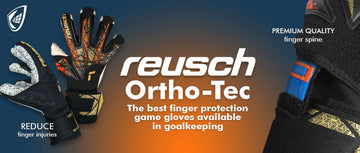
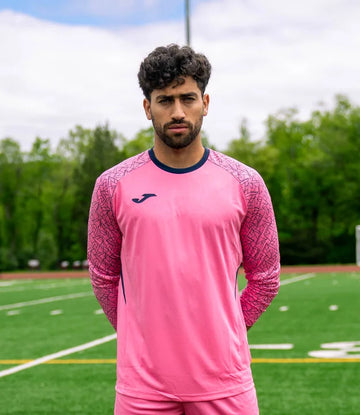
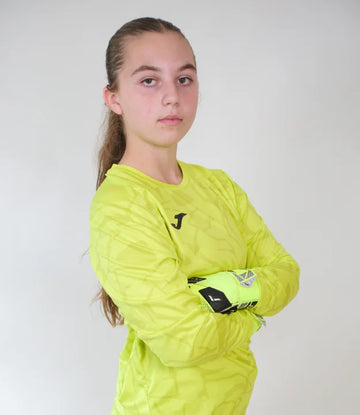
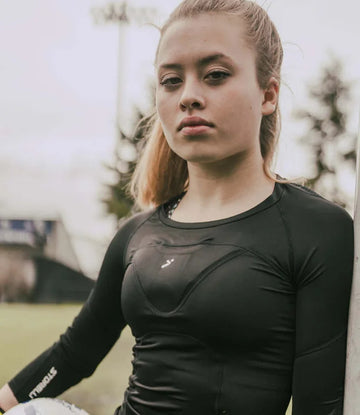
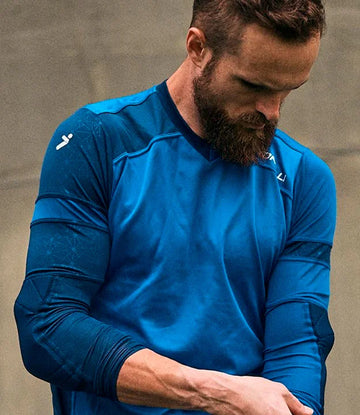
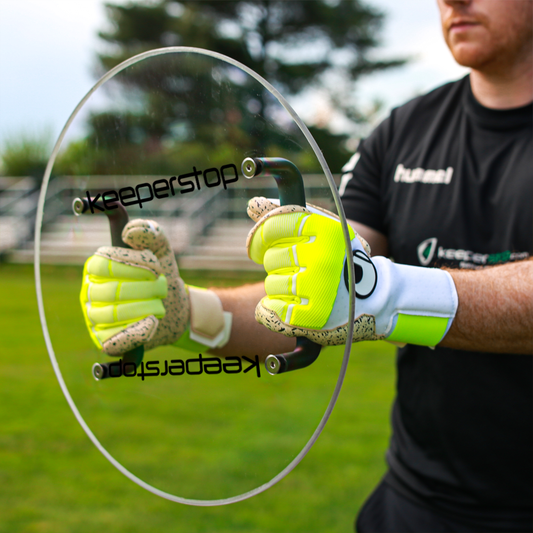
 Gloves
Gloves
 Jerseys
Jerseys
 Gear
Gear
 Brands
Brands
